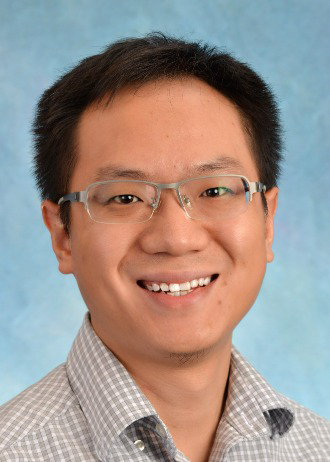Faculty

Office address:
Tel:
mail:liubei_pku@163.com (暂用)
Homepage:https://www.liubeilab.com/
Bei Liu
Assistant Professor
Assistant Professor, Principal Investigator
National Biomedical Imaging Center
College of Future Technology
Biography
Dr. Bei Liu is an assistant professor in the College of Future Technology, Peking University, China. His research lies at the interface of life science, protein engineering, and microscopy, with a focus on biosensors and optogenetic tools. He has published over 15 papers in peer-reviewed journals, including Cell, Nature Chemical Biology, and Nature Communication. The total citation is over 1000. He has delivered several invited talks at international conferences hosted by the Biophysical Society (US) and Janelia Farm Research Campus. He also chaired the Optical Microscopy and Superresolution Imaging platform at the BPS annual meeting. He served as a guest reviewer for over ten journals, including Cell Reports Methods, Optics Express, Optics Letters, Frontiers in Chemistry, etc.
Courses
n N/A
Education
n BE 2005 Biomedical Engineering, Huazhong University of Science and Technology
n Ph. D. 2014 Biophysics, Huazhong University of Science and Technology & Chinese Academy of Sciences
Supervisor: Prof. Xu Tao)
Experience
n 2015. 1 – 2019.4 Postdoc, Department of Pharmacology, University of North Carolina at Chapel Hill.
(Advisor: Klaus M. Hahn)
n 2019. 5 – 2022.4 Research Assistant Professor, University of North Carolina at Chapel Hill.
(Advisor: Klaus M. Hahn)
n 2022. 5 – Assistant Professor, College of Future Technology, Peking University
Projects:
n N/A
Representative publications:
1. Liu, B.*, Stone, O.*, Pablo, M.*, et al. Biosensors based on peptide exposure show single molecule conformations in live cells. Cell. 184(22):5670-5685.e23. doi: 10.1016/j.cell.2021.09.026 (2021).
2. Jin, L.*, Liu, B.*, #, Zhao, F., et al. Deep learning enables structured illumination microscopy with low light levels and enhanced speed. Nat Commu. 11, 1934 (2020)
3. Liu, B., Marston, D.J., Hahn, K.M. Engineering Optogenetic Protein Analogs. Methods Mol Biol. 2173: 113-126 (2020). (book chapter)
4. Stone, O.*, Kaul, N.*, Liu, B.*, et al. Optogenetic control of Cofilin and αTAT in living cells using Z-lock. Nat Chem Biol 15, 1183–1190 (2019).
5. Liu, B.*, Hobson, C.*, et al. VIEW-MOD: a versatile illumination engine with a modular optical design for fluorescence microscopy. Opt. Express 27, 19950-19972 (2019)
6. Liu, B.*, Xue, Y.*, Zhao, W.*, et al. Three-dimensional super-resolution protein localization correlated with vitrified cellular context. [J]. Scientific reports, 2015, 5.
7. Chen, S.*, Li, L.*, Li, J.*, Liu, B., et al. SEC-10 and RAB-10 coordinate basolateral recycling of clathrin-independent cargo through endosomal tubules in Caenorhabditis elegans [J]. Proc Natl Acad Sci USA, 2014, 111(43): 15432-15437.
8. Chang, H.*, Zhang, M.*, Ji, W.*, Chen, J., Zhang, Y., Liu, B., Lu, J., Zhang, J., Xu, P., and Xu, T. (2012). A unique series of reversibly switchable fluorescent proteins with beneficial properties for various applications. Proc Natl Acad Sci USA.
9. Zhang, M.*, Chang, H.*, Zhang, Y.*, Yu, J., Wu, L., Ji, W., Chen, J., Liu, B., Lu, J., Liu, Y., Zhang, J., Xu, P. and Xu, T. (2012). Rational design of true monomeric and bright photoconvertible fluorescent proteins. Nature Methods.
